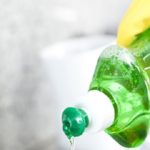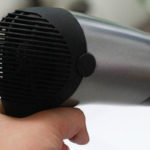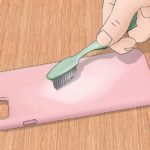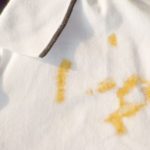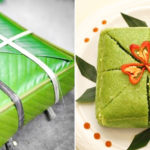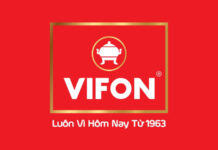Below are some methods to clean pots and pans with different materials, please refer!
Cleaning stir-fry pans in 5 minutes
The best time to clean your pots and pans is when they are still hot after cooking. Simply pour hot water into the pan to soften the dirt. This can immediately remove even burnt food and oil. However, be careful, only use hot water with a hot pan. Otherwise, your pan may be at risk of thermal shock, causing it to warp. After the pan has been cleared of dirt, use a sponge or scrub brush and a drop of dish soap to clean the pan. Then rinse thoroughly with water and your pan will be clean again.
Cleaning aluminum pans with baking soda
If your pan has cooled down and has food residue inside, it will be harder to clean. First, scrape off any remaining grease or food and throw them in the trash. Do not pour grease or oil down the drain as it can clog the pipes. You can use an old jar or soda can to store used grease and then dispose of it.
Use a brush or scrub brush to remove any remaining stains. Hot water and a drop of dish soap will remove oil stains and clean the pan quickly. But if you have burnt food or oil stains on the pan, remember to use baking soda.
– Create a paste with baking soda and a little water
– Spread the baking soda mixture all over the bottom of the pan
– Let it sit for 5 minutes
– Take a scrub brush and scrub in circles on the pan to remove the stains
Another way to clean the pan with baking soda is to mix 1 cup of water and 2 tablespoons of baking soda. Pour into the pan until the bottom is covered about 1-2 cm deep. If the stain spreads to both sides, add more solution until the stain is covered. Then place the pan on the stove and boil the water until the water evaporates almost completely. Remember to turn off the heat before the water evaporates to avoid damaging the bottom of the pan.
You will see a white film covering the pan where the water has evaporated. This is the remaining baking soda. Place the pan on the stove and use a brush with a long handle to brush off the baking soda from the pan while the pan is still hot.
Cleaning cast iron pans
Cast iron pans make many housewives afraid because they think they are difficult to clean. But if stored properly, cast iron pans can last longer than most other cooking utensils you can use. The most important thing to remember with cast iron is to avoid thermal shock. If the pan is hot, use hot water. And if it’s cold, use cold water. You must always wash cast iron by hand. It will not last long in the dishwasher.
How to clean:
– Pour excess oil or fat out
– Rinse your cast iron pan in hot water while it is still warm
– Use a scrub brush or pan scraper to remove any burnt food
If your cast iron pan has cooled down and cannot be cleaned properly, you can remove stubborn stains by reheating it.
– Pour a little water into the pan to fill the bottom about 1cm deep
– Place the pan on the stove and slowly boil the water
– Use a pan scraper or brush to remove stubborn food with hot water
– Rinse the pan as usual to clean it completely
After each use, your cast iron pan should also be oiled. Dry the pan thoroughly with a small fiber cloth or paper towel. Then rinse the pan with a small amount of cooking oil. Use a paper towel to wipe the surface and remove any excess oil.
Cast iron pan manufacturers say you can use a small amount of dish soap if necessary to clean the cast iron pan. However, you should avoid doing this more than necessary. Dish soap can damage the protective layer of the pan and cause it to rust.
Cleaning rusty cast iron pans
If your cast iron pan is rusty, don’t worry. You just need to remove the rust and season the pan.
Step 1: Scrub the pan with soapy water and steel wool to remove the rust
Step 2: Rinse the pan and dry thoroughly
Step 3: Coat the pan with a thin layer of cooking oil
Step 4: Use a cloth or paper towel to remove excess oil
Step 5: Place the pan upside down on the top rack of the oven
Step 6: Bake at 450-500 degrees for 1 hour
Step 7: Let the pan cool completely
You may need to repeat steps 3-7 multiple times to create a black patina that indicates the pan has been properly seasoned.
Cleaning copper pans
Copper has natural antibacterial properties, so it is one of the safest choices for food preparation. In addition, copper is an excellent heat conductor, corrosion-resistant, and very easy to clean. It’s no wonder copper pans have been highly rated by chefs for centuries!
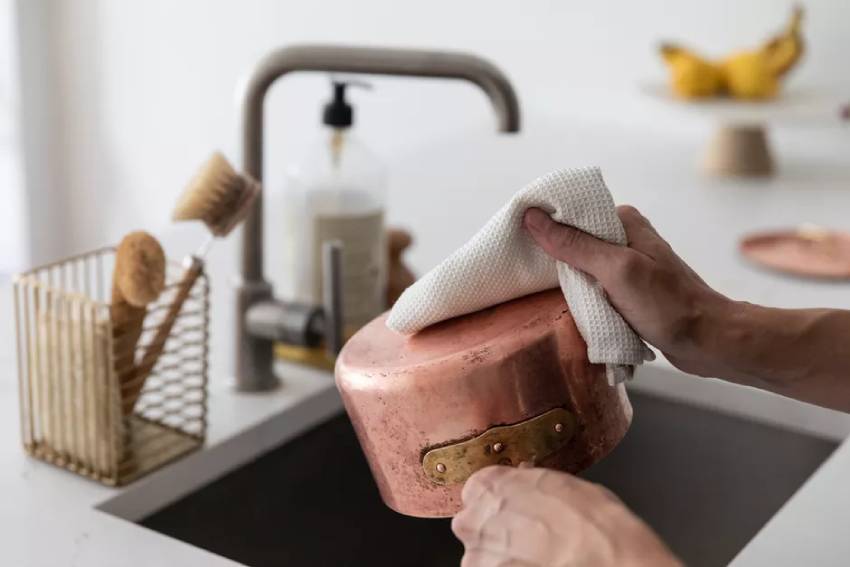
When it comes to cleaning copper pans, you need to take some additional preventive measures. Copper is a fragile metal, so abrasive cleansers can scratch the surface of the pan. Copper also reacts and can be discolored after contact with commercial pan cleaners.
Most copper pans are lined with tin, creating an excellent non-stick surface. You can clean the inside of copper pans with a sponge, water, and a drop of dish soap. If the food is burnt, soak the pan in hot water for 15 minutes and then try again with soap and sponge. After cleaning the pan, dry it thoroughly with a small fiber cloth to avoid dulling the copper.
Cleaning non-stick pans
Non-stick pans are very convenient for cooking, but the non-stick coating can be damaged by corrosive cleaning agents. The non-stick coating is also sensitive to heat, so follow the tips below to make the most of your non-stick pan.
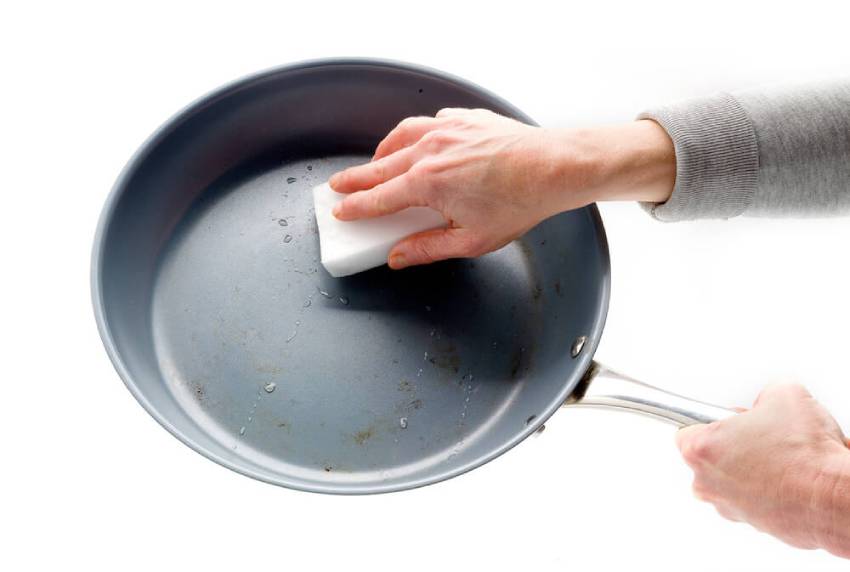
How to:
– Let the pan cool completely before cleaning to avoid warping
– Use dish soap to remove grease residue after use, as this can damage the coating
– Avoid using steel wool or abrasive cleaners on non-stick pans
– Use a damp sponge and coarse salt to remove stubborn stains
– Dry the pan with a small fiber cloth after cleaning
If the non-stick coating starts to peel off, it’s time to replace the pan. Most non-stick pans have a lifespan of about 5 years, shorter than other cooking utensils.
Cleaning non-stick pans and burnt pots
Clean burnt pans with vinegar and baking soda
– Fill half the pan with a mixture of water and white vinegar 50/50
– Bring to a boil and add 2 tablespoons of baking soda
– Turn off the heat and let it sit for 15 minutes
– Pour out the water/vinegar mixture and scrub the pan with a brush
– Repeat as necessary
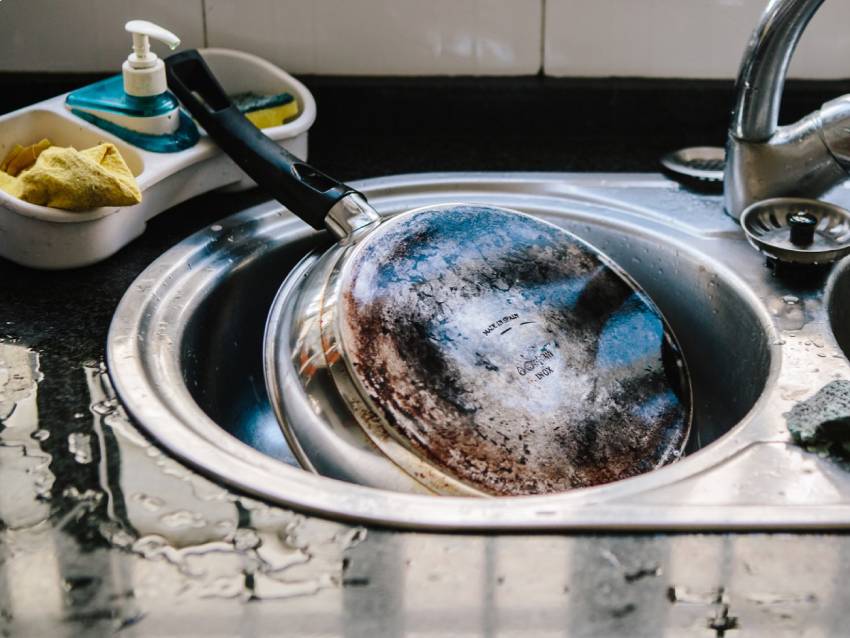
Cleaning burnt pots with baking soda
– Fill a large pot or pan with water and add ½ cup of baking soda
– Place the burnt pan in the pot, completely submerged if possible
– Bring the water to a boil
– Boil for 15 minutes
– Remove the burnt pan and scrub with a brush
Cleaning burnt pots with lemon
– Fill the pan with water
– Add 1-2 sliced lemons
– Bring the water to a boil
– Remove the pan from the heat after 5-10 minutes
– Discard the lemons and hot water
– Clean the pan with soapy water and a scrub brush
According to An Nhiên – Vietnamnet

























